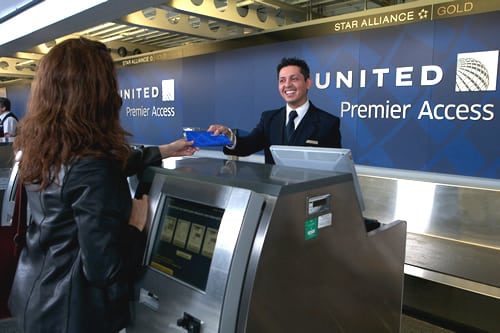Skift Take
The U.S. is the most aggressive region in the world when it comes to ancillary revenue, with seven of the top 10 airlines in ancillary revenue totals. However, Asia-Pacific, with carriers such as AirAsia, Tiger Airways and Jetstar, is certainly no slouch.
United and Spirit airlines each can make competing claims to being the global king of airline ancillary revenue, but they have embarked on different routes to secure the crown.
IdeaWorks Company and Amadeus released their latest report this week on the depth of global airlines’ ancillary revenue streams, which crested at $22.6 billion in 2011 among the 50 carriers that disclose their activity.
That’s just more than 7% of these airlines’ annual revenue and can mean the difference between pleasing stakeholders and lots of red ink.
Even before the 2007 recession, airlines began unbundling products and branding fares. Meanwhile, fees emerged as a a safety net as fuel costs soared, but today many airlines view ancillary revenue as their ticket to profitability.
Fees versus services
This ancillary revenue is a mix of fees leveled at passengers, and those directed at credit card companies and other partners buying into loyalty programs.
When it comes to costs shouldered directly by consumers, there are fees — and then there are fees.
While Spirit charges “optional fees” for everything from carry-ons placed in overhead bins to seat assignments and boarding passes printed at the ticket counter, American Airlines’ Five Star Pricing ($125 at LAX, MIA, JFK and LGA) includes curbside meet and greet; expedited check-in; separate security lanes at LAX and MIA; lounge access; priority reaccommodation during delays; pre-boarding assistance, and even an escort through immigration and customs on international arrivals.
As with almost anything on commercial aircraft these days, the fees tend to separate the haves and have nots, the disgruntled and the privileged.
Who makes what
IdeaWorks estimated last year that U.S. major carriers, such as United, Delta and Alaska, earned about half of their ancillary revenue from selling frequent flyer program miles directly to partners; 30% from a la carte services sold on their websites or on board, and about 20% from dreaded bag fees.
So, for the major carriers, fees of various sorts account for a large chunk of ancillary revenue, although loyalty programs generate around 50% of ancillary revenue and generally are the leading source.
That may not be true for a low-cost carrier such as Spirit as its percentage of ancillary revenue from fees you love to hate undoubtedly skews higher than at United, says Jay Sorensen, president of IdeaWorks’ product, partnership and marketing practice.
While United has made strides in wrangling more revenue out of loyalty partners, the Free Spirit frequent flyer program doesn’t have that kind of scale and clout, Sorensen adds.
The 900 pound fee gorilla
United clearly is the undisputed leader in ancillary revenue totals from fees, loyalty programs, and hotel and car bookings among the 50 global airlines that publicized such numbers in 2011.
The scale of United’s ancillary revenue push is hard to believe. The airline last year took in nearly $5.2 billion in ancillary revenue, and that is almost 23% of all the ancillary revenue generated by the 50 carriers covered in the report.
United, which merged with Continental in 2010 and is considered the world’s second-largest airline in terms of passengers, widened the gap over Delta, which generated only $2.5 million in 2011. United’s ancillary revenue mix included fees for checked bags, Economy Plus seating, and onboard snackboxes, and as well as loyalty program deals with credit card companies and hotels.
Sorensen thinks United’s ancillary revenue tally made further gains over Delta and others because United created “a powerful combination” when it consolidated Continental OnePass into United MileagePlus. This gave United more leverage when selling miles and points to hotels and credit card companies, Sorensen says.
Delta’s ancillary revenue also fell in 2011 because it had pumped up its numbers in 2010 by including revenue from maintenance contracts, and these were no longer counted last year.
If the Spirit moves you — or doesn’t
While Spirit Airlines, which charges for carry-ons ($30 online, $40 at the airport), and everything else from snacks to assigned seats, got the highest percentage (33.2%) of its total revenue from such a la carte fees, United didn’t even make the top 10 in that category in 2011.
As a percentage of total revenue, the ancillary revenue leaders among low cost carriers are much more dependent on these revenue flows than their larger counterparts.
In fact, no global airline made that top 10 list as low cost carriers (including Spirit, Jet2.com, Allegiant, easyJet and RyanAir) crushed the majors when it comes to ancillary revenue as a percentage of overall revenue.
Somewhat different strokes
What’s going on in the evolution of ancillary revenue is that some airlines are “redefining the journey,” argues Henry Harteveldt, co-founder of Atmosphere Research Group.
While some airlines, such as Spirit and equally notorious Ryanair persist in gouging fee-weary travelers every chance they get, other carriers stick with their bag and meal fees, but in Harteveldt’s words, also “offer a series of microproducts and let passengers personalize the service.”
Of course, if you are headed to the airport and have already plunked down some cash for checked bag fees, and are dreading the prospect of shelling out $7 per person on board for a fig bar and tortilla chips, then you can appreciate that all ancillary revenue is not created equally.
The Daily Newsletter
Our daily coverage of the global travel industry. Written by editors and analysts from across Skift’s brands.
Have a confidential tip for Skift? Get in touch

